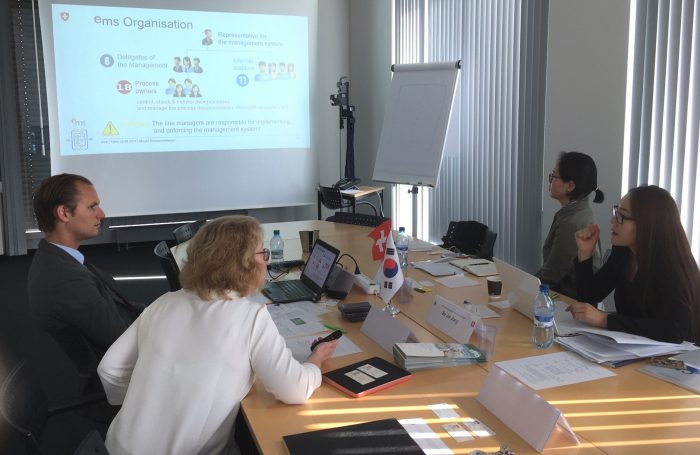South Korean safety authority visits ENSI
A delegation from South Korea’s safety authority, the Korea Institute of Nuclear Safety (KINS), has visited the Swiss Federal Nuclear Safety Inspectorate (ENSI) in Brugg to learn about its supervisory activities. Their visit focused on the topics of the management system and safety culture.
“We welcome the exchange of ideas with the Korea Institute of Nuclear Safety, as it is an opportunity for us to benefit from the experiences of our international partners,” says Annatina Müller-Germanà, Head of ENSI’s International Affairs Section. On September 28, ENSI received a delegation of South Korean safety experts. The aim of the visit was to allow the exchange of information between the Korean and Swiss authorities on the topics of safety culture and the management system. A further point of discussion centred on regulatory challenges in relation to the phase out of nuclear energy. KINS is interested in learning more about the practices, processes and experiences of international authorities facing the same situation.
“We value the exchange of information and ideas with ENSI in relation to supervisory practices and how we can improve the efficiency and performance of our own supervisory activities through an integrated management system and internal processes,” says Su Jin Jung, Manager of the Performance and Strategy Department at KINS.
The Korean delegation and ENSI staff also exchanged experiences on safety culture. KINS wanted to learn more about ENSI’s project on the subject of oversight culture. “We know that ENSI has already made substantial progress in this area, in which it plays a leading international role. That’s why we’re keen to learn more about it,” says Jung. KINS has also launched a comprehensive project on the subject of safety and oversight culture. This is currently in the process of implementation.
ENSI and KINS have agreed to exchange ideas on a regular basis in future with regard to the regulatory challenges arising from the phase out of nuclear energy and the practical implementation of safety culture.


